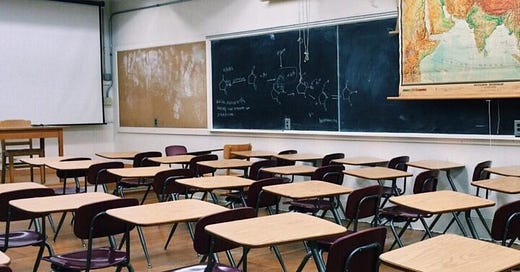🇺🇸 USA: The lingering consequences of COVID lockdowns on education
Five years after COVID, the aftereffects on American education are profound and multifaceted.
By Lalaina Andriamparany for Le Courrier des Stratèges
In 2020, the COVID-19 crisis disrupted the global education system. Health authorities adopted drastic measures to supposedly slow the spread of the virus. Unnecessary lockdowns were among them. In the United States, school closures and the shift to remote learning left a deep mark. Five years later, students, teachers, and schools continue to grapple with the damage these lockdowns have left unrepaired. From academic delays and mental health issues to a teacher shortage and a lasting transformation in teaching methods, COVID-related lockdowns have devastated the American education system.
In the US, school closures have led to a significant decline in students' academic skills, particularly in reading and mathematics. According to data from the National Center for Education Statistics, national test results show that students have not yet caught up. Michael Petrilli, president of the Thomas B. Fordham Institute, estimates that returning to pre-pandemic levels could take a generation. Students, particularly elementary school students, have lost crucial years for acquiring basic skills, which has repercussions for their educational journey.
The rise of educational alternatives
The pandemic has also accelerated interest in alternatives to traditional public schools. The closure of schools in March 2020 led to an abrupt transition to remote learning. Many students have seen their reading and mathematics skills decline significantly. National test results show that reading scores continue to decline and that mathematics scores have not returned to pre-pandemic levels. According to Michael Petrilli, president of the Fordham Institute, we will have to wait for a new generation unaffected by the crisis to return to normal.
Remote learning has accelerated the adoption of digital technologies in teaching. Learning platforms and course management systems, such as Kahoot and Zoom, have become ubiquitous in classrooms. A report from the Brookings Institution highlights that teachers are increasingly using artificial intelligence and digital tools to compensate for academic gaps and diversify teaching methods.
An explosion in behavioral problems
Upon returning to the classroom, many teachers have lamented an increase in behavioral problems. A survey by the EdWeek Research Center reveals that more than 70% of teachers are seeing a decline in student behavior. This trend is partly attributed to the loss of social skills during school closures, which has exacerbated classroom management challenges.
Chronic absenteeism has increased significantly since the pandemic, rising from 15% to 26% between 2018 and 2023. This phenomenon, which refers to students missing at least 10% of the school year, undermines efforts to address learning gaps. According to the American Enterprise Institute, it is one of the most pressing issues facing public schools today.
Teacher Shortage: A Systemic Challenge
The pandemic has pushed many teachers out of the profession, discouraged by working conditions and lack of support. According to a RAND survey, approximately 8% of educators left their positions after the 2020-2021 school year. Schools are now facing a shortage of qualified staff, which is particularly affecting disadvantaged students. To attract new teachers, some states have adjusted their training programs and financial incentives.
Five years after COVID, the aftereffects on American education are profound and multifaceted. Academic delays, mental health issues, teacher shortages, and chronic absenteeism continue to pose major challenges. Overcoming these challenges will require a concerted effort from educators, politicians, and families to rebuild a more resilient and inclusive education system. COVID has had its hidden impact, which the globalized caste has consistently chosen to use to control populations. By manipulating people's fears, it has instrumentalized the disease, also leading to psychological deterioration directly due to the constant anxiety it maintains.





